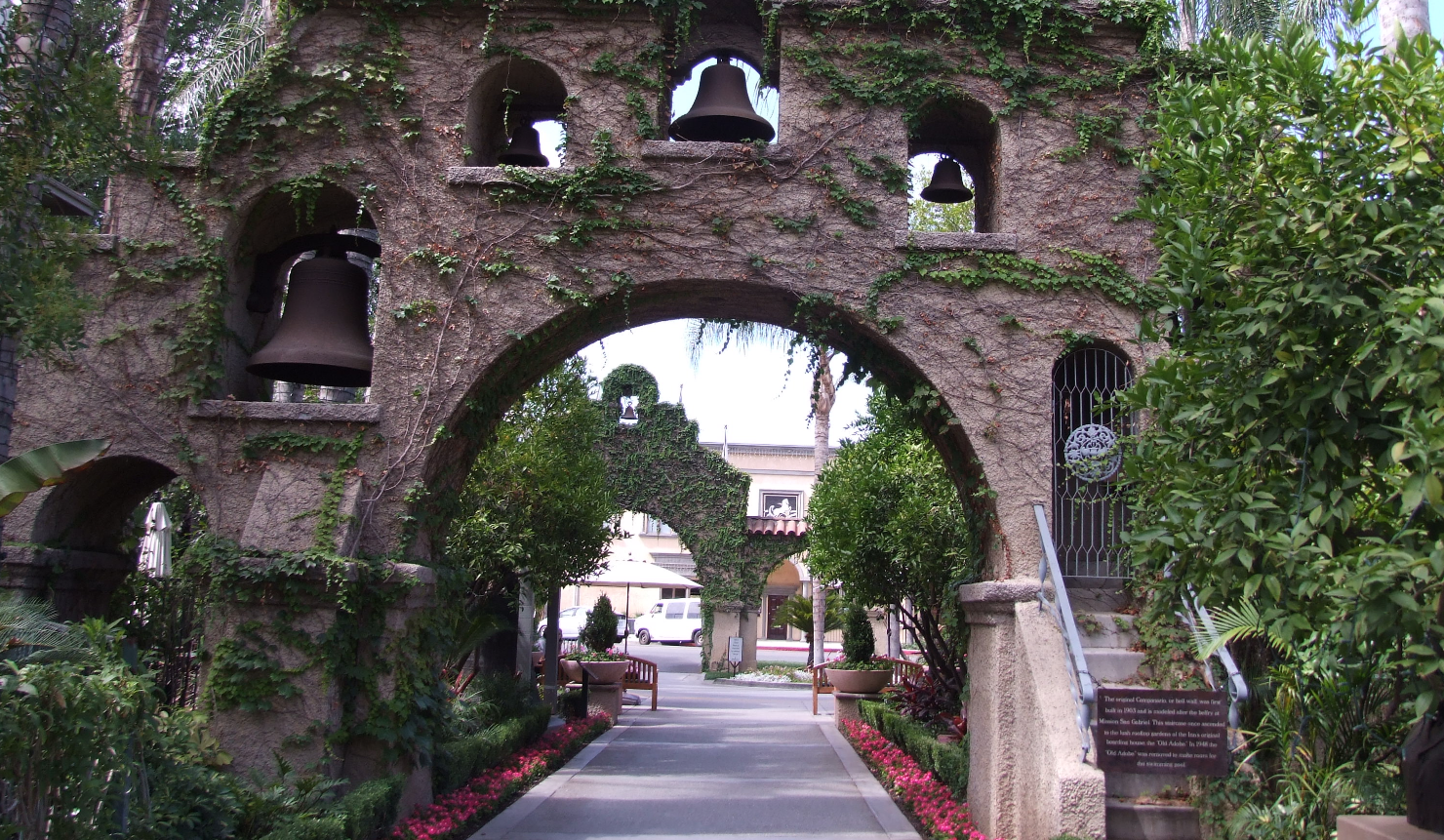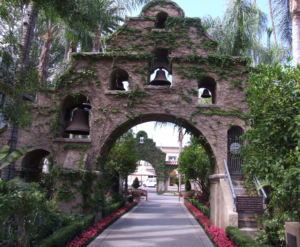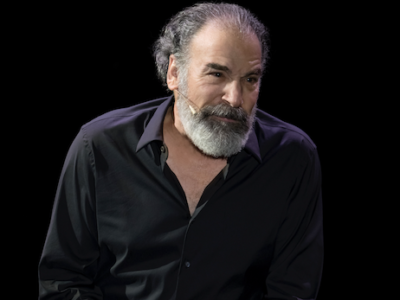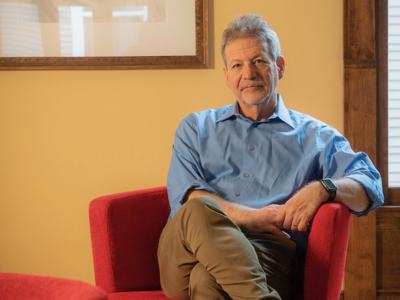Editor’s Note: The following is an excerpt from a recently published book by San Diego author Don Harrison, entitled “Schlepping Through the American West: There is a Jewish Story Everywhere.” Harrison’s book is available for purchase online at Amazon.com.
RIVERSIDE, California –Around the beginning of the 20th century, Frank Miller started collecting bells for what would become the historic Mission Inn here in this city along the Santa Ana River. Eventually, he accumulated 800 bells of various sizes as well as innumerable Christian crosses. People began to believe that his hotel, financed by a loan from Henry Huntington, actually had itself been one of the California missions. It never was, but that didn’t stop Miller, a natural born promoter, from encouraging the belief. He even would dress up in a Padre’s robe and meet trains that came by his hotel.
Funny thing: Miller wasn’t a Catholic. Close to the hotel stands his own Congregational Church, featuring a tower by Arthur Benton, who also designed the signature California Tower in San Diego’s Balboa Park. Miller just loved the romance of the Missions, sparked in part by his reading of Helen Hunt Jackson’s famous novel, Ramona.
Some ten U.S. Presidents have visited the Mission Inn to date, although most of them did not do so during their term of office. Richard Nixon married future first lady Pat Ryan by the fire place in a room off the old hotel’s lobby. Ronald Reagan and the former Nancy Davis spent the first night of their married life in one of the hotel’s suites.
Teddy Roosevelt visited the hotel shortly after becoming the President in the wake of the assassination of William McKinley. That was about the time the hotel had newly installed its electric light system. When the lights suddenly went out, Roosevelt’s protection detail pushed him to the floor of his room and pointed their guns and rifles at the door. Miller suddenly came in to see if his famous guest was okay, and nearly could have been shot to death.
When Roosevelt’s successor, William Howard Taft visited the hotel, Miller had heard that because of Taft’s girth—over 300 pounds—the President had on more than one occasion become stuck in the White House bath tub. So, Miller had an extra wide chair built for him, which Taft tried out but demanded that no photographs be taken of him sitting in it. Today visitors to the Mission Inn are able to sit in Taft’s chair, which is located in the lobby near portraits of him and other U.S. Presidents who had been hotel guests.
Telling these and other historic stories, guide Nancy Kim of the Mission Inn Foundation probably makes her daughter and son proud. Both are history professors, she at Cal State Northridge and he at Crafton Hills College. Kim’s stories about some of the hotel’s Jewish guests also helped this publication validate its premise that “there’s a Jewish story everywhere” as grandson Shor and I made stops along the northbound Interstate 15 as part of a western North American road trip.
Four of the best known Jewish guests who at one time or another stayed at the Mission Inn were actress Sarah Bernhardt, publisher Joseph Pulitzer, actor Paul Newman, and physicist Albert Einstein.
Bernhardt performed at the opera house across the street from the Mission Inn – one of the civic, religious, and cultural buildings in Riverside that Miller either helped to finance or had constructed. And when famous stars such as Bernhardt played at the opera house, Miller made certain they stayed at the Mission Inn. Pulitzer, the newspaperman who gave his name to journalism’s most famous prize, slipped in and out of the hotel without anything remarkable happening, but the museum sells a book about him in its famous guests’ collection.
Albert Einstein, according to Kim, took breakfast one morning in a hotel garden in the days before the hotel had any formal restaurants. “He had a muffin and some fruit and he was just sitting there enjoying his meal, and one of the parrots in the Court of the Birds , landed on his table and started eating his breakfast muffin, and Einstein was not very happy about that.”
There ought to be a punchline to this story, but there wasn’t. Even such a genius as Einstein can react to situations in relatively ordinary ways.
Miller’s bird collection was worthy of mention. One macaw, with blue and yellow feathers, was given the name Napoleon, as its plumage resembled the French dictator’s uniform. Another macaw, because of its coat of many colors, was named after the biblical Joseph.
Actor Paul Newman, according to Kim, favored a certain suite atop the hotel, coming back year after year to enjoy the action at a nearby raceway. One year the staff told him, with profuse apologies and some embarrassment, that he could not have his favorite suite because the plumbing wasn’t working properly.
No problem, said the star, he would also rent the suite next door for his bathroom needs. According to Kim, “word got out, and when Mr. Newman was ready to shower in the next room, he wore his towel wrapped around him. “ Word got out, and the hotel staff, particularly the women, just happened to be gathered in the hallway as he padded from room to room.
Miller’s daughter and son-in-law ran the hotel after his death, but without the same kind of loving attention. His grandchildren were not interested in being hoteliers, and the Mission Inn went through a series of sales. According to Kim, it fell on hard times, serving for a while as a dormitory for the University of California at Riverside and as an apartment house for the elderly.
Among the hoteliers who purchased it was the Jewish philanthropist Ben Swig, who was a majority shareholder in the majestic Fairmount Hotel of San Francisco. But, according to Kim, Swig did not lavish on the Mission Inn the kind of attention that he gave to the Fairmount, perhaps because he lived in San Francisco and not in Riverside. He sold at auction many of the items that Miller had collected, and installed what Kim considered to be garish furniture in the lobby before eventually selling the property, and later buying it back, then selling it again.
Kim said while preservationists take a dim view of Swig having sold off parts of the Miller collection – some of which subsequently has found its way back to the historic hotel – Swig deserves credit for coming along at a time when the City of Riverside had seriously considered tearing down the old hotel, and dedicating the downtown block it occupies to other uses. If it hadn’t been for Swig, this colorful landmark—built in a quadrangle around a city block in at least four different architectural styles–might have disappeared along with many of its stories.
Today the hotel is owned by Duane Roberts, whose family used to operate a meat packing business. One day, according to Kim, Roberts noticed that many of his Mexican workers brought burritos to work, and he thought other people might enjoy lunchtime burritos as well. So he devised a way of freezing them and having them delivered for microwaving at convenience stores, thus making his fortune.
Don Harrison is editor of San Diego Jewish World at SDJewishWorld.com. He may be contacted via donald.harrison@sdjewishworld.com.











Comments